A very limited photo-diary of the group section of our Ethiopian
trip. A larger set will be available in due course, but the final
picture count is well over 5,000, so I don't propose publishing in
full!
Part 1 - Group Tour
December 19
Our story begins...
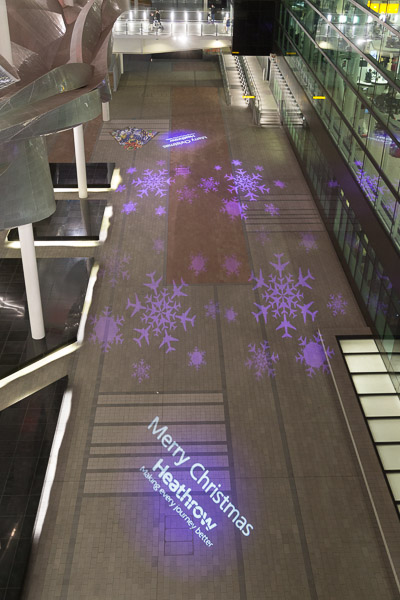
Heathrow Airport
December 20
Some hours later, we're in Addis Ababa...
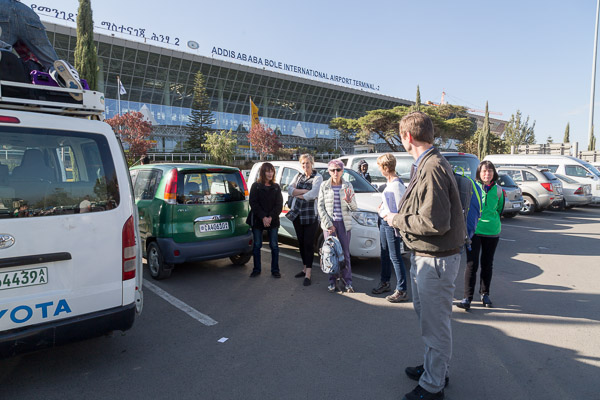
The team assembles.
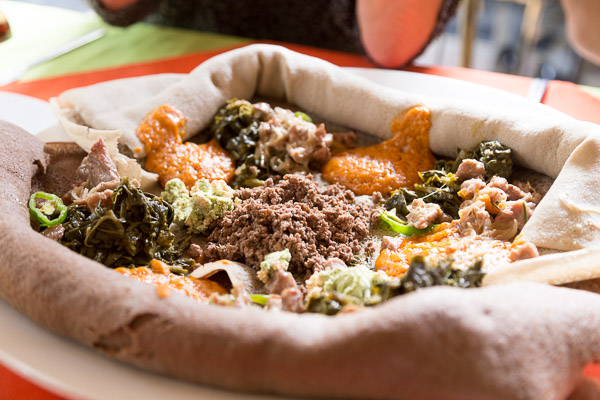
Our first sight and taste of Ethiopian food. Various little piles of
meat and veg on a bed of injera: an Ethiopian staple which
is a kind of cross between sourdough bread and foam rubber. I rather
like it myself, but not everybody is in wholehearted agreement.
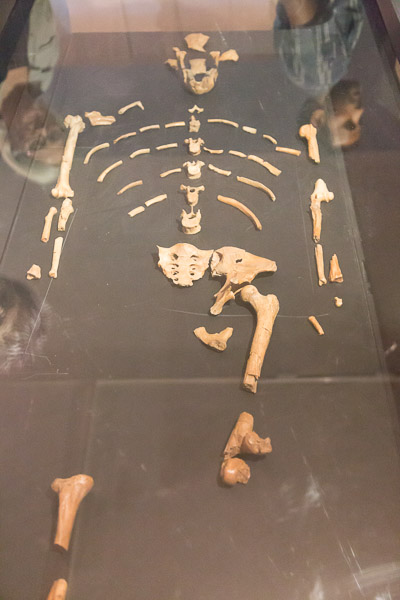
There was once a US TV show called "I Love Lucy". It was, I believe,
a quite different Lucy, who wasn't even a member of Australopithecus
Afarensis.
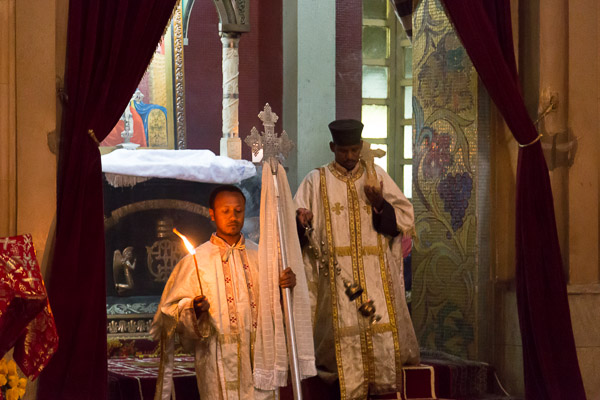
At the first church we visit, they're having a mini-Mass. The full
thing lasts three hours and there are no seats; when you aren't
kneeling, you stand. Even a short snippet of the mini version is
plenty for us.
December 21
To Gondar...
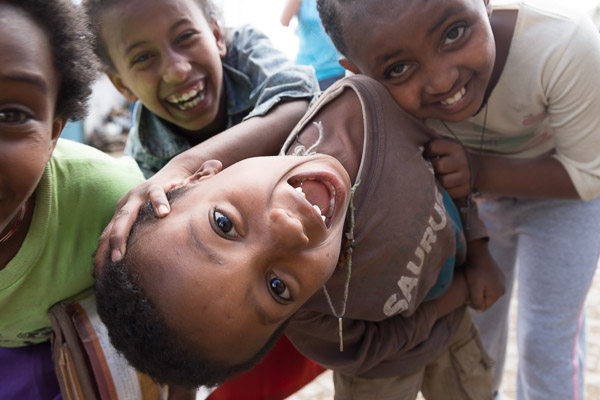
The local kids love to have their pictures taken! Sometimes they ask
for money but these ones are just having fun.

Amanda spots that collectively, the three of us are wearing the
colours of the Ethiopian flag!
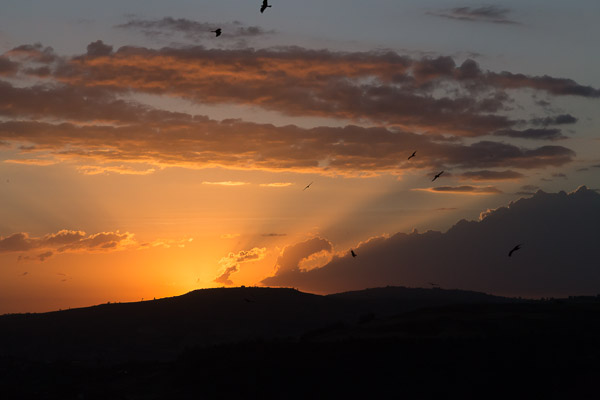
View from the lodge at sunset.
December 22
The Simien Mountains...

Squawk! This is a bird with attitude! At the time, I was doubtless
told what kind of bird it was.
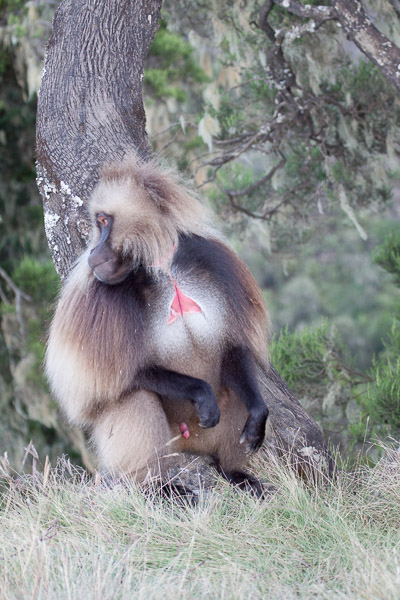
Gelada baboons happily let us stroll among them. This is a male, in
case you couldn't tell.
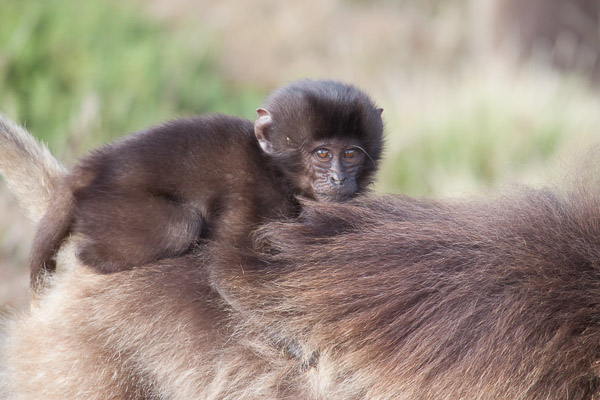
And for maximum "Awww" factor, a cute baby riding on its mother's
back.
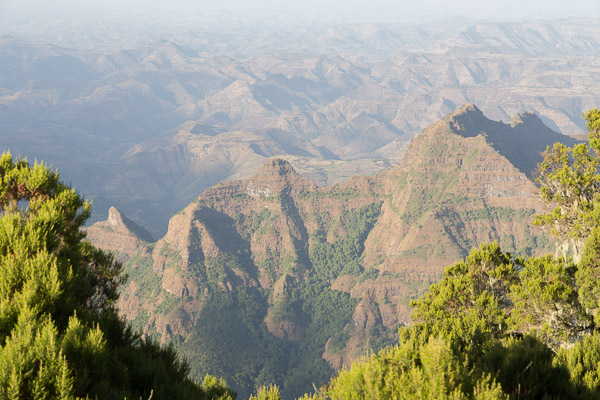
A baboon's-eye view of home.
December 23
To Axum, once capital of an ancient empire...
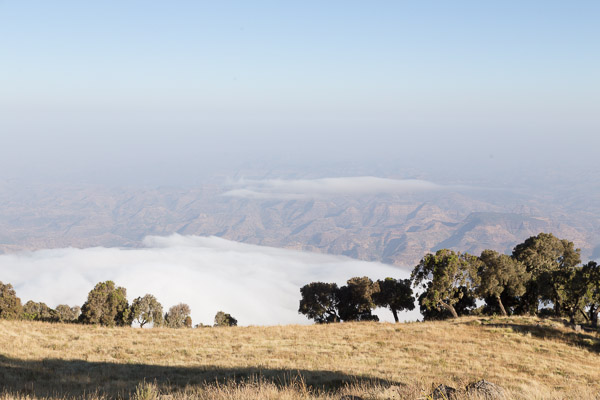
We start above the clouds.
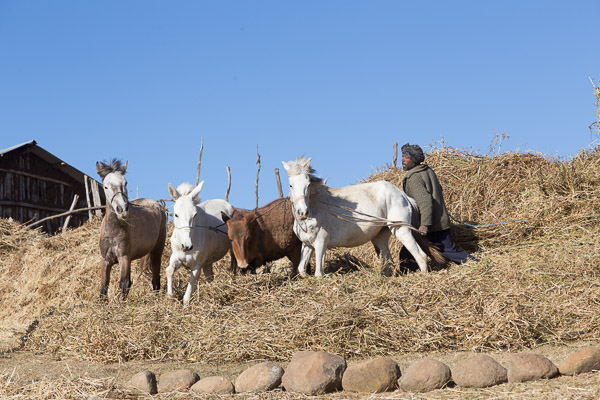
On the way, we watch farmers threshing grain. They pile it on the
ground and get horses or donkeys to run around in circles trampling
it!
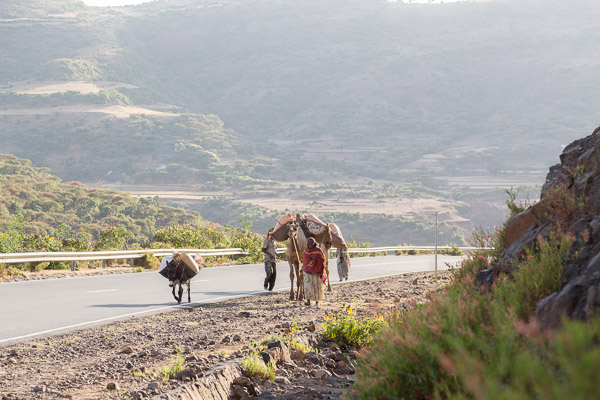
Ethiopia has more than five million donkeys - second only in the
world to China - but in this part they also use camels.
December 24
Axum.
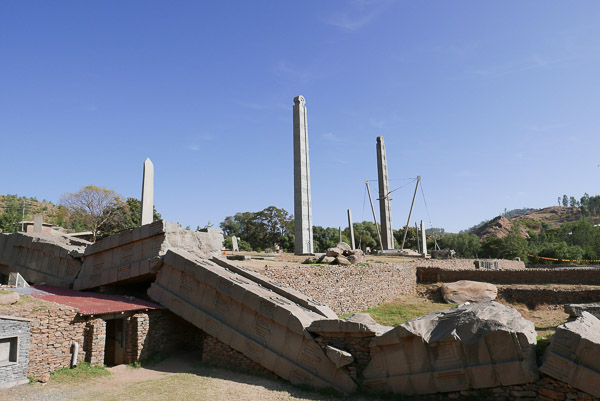
4th Century stelae at the Northern Stelae Park; the broken one in
the foreground would be the largest in the world if it hadn't
toppled over, which suggests that maybe it was just a bit too
big.
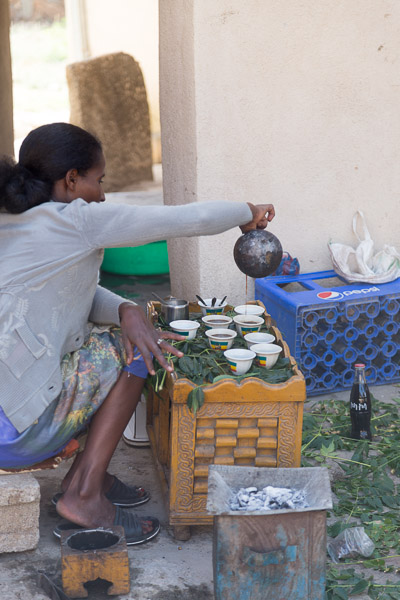
Our first coffee soromeny [sic - that's how 'ceremony' was mis-spelt
on the sign].
Making coffee properly in Ethiopia is far from a matter of putting a
teaspoon of Nescafe into hot water - Lordy, is it far from that! You
start by roasting the beans over a charcoal burner, then pass the
roasting tin around wafting the smoke for everyone to appreciate,
before pounding them in a pestle and mortar. Then you can put the
powder in your coffee pot with water and boil it before finally
pouring it out from a height guaranteed to cause splashes (which
please the Zar spirits]. And then you can drink it.
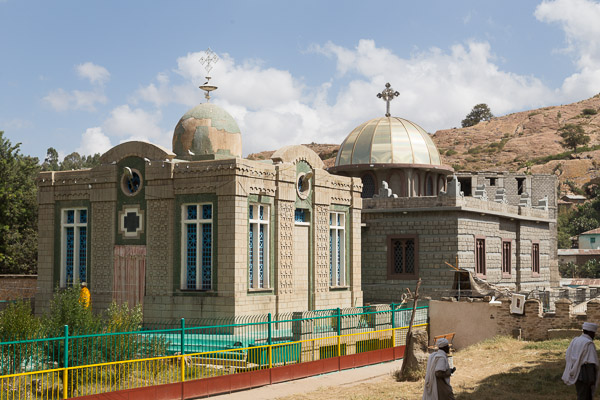
This is where the real Ark of the Covenant is kept. All
Orthodox churches have their own copy, but there's only one original
of course. Nobody is allowed to enter the building except the
guardian (the figure in yellow), not even the Patriarch himself.
There's apparently a plan to move it to the further building, which
has such advantages as a roof that doesn't let water in, but it
doesn't seem to be a simple matter.
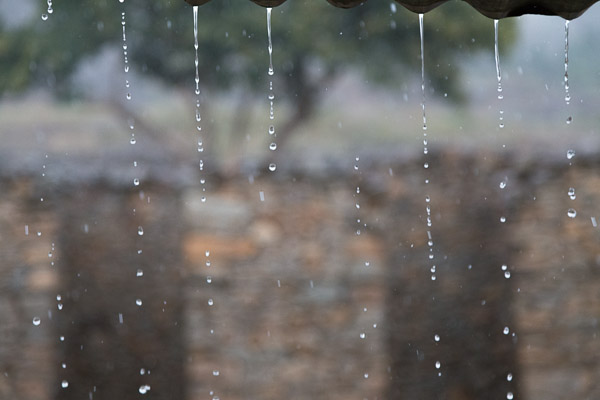
Unseasonal rain hits hard, and we run for the shelter of a
tin-roofed archeological site. Hope the Ark's guardian has an
umbrella.
December 25
Christmas Day. But not Ethiopian Christmas Day, that's not
until January 7...
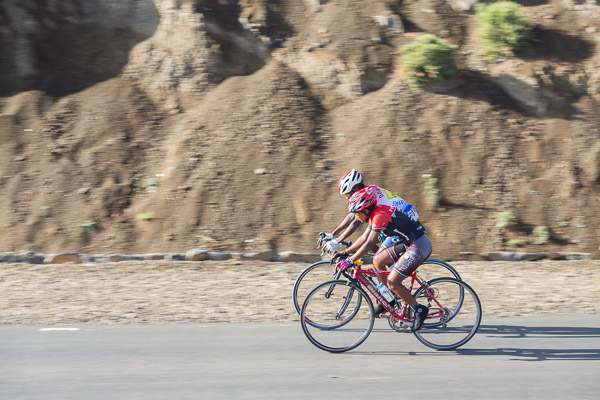
Leaving town, we share the road with a bicycle race.
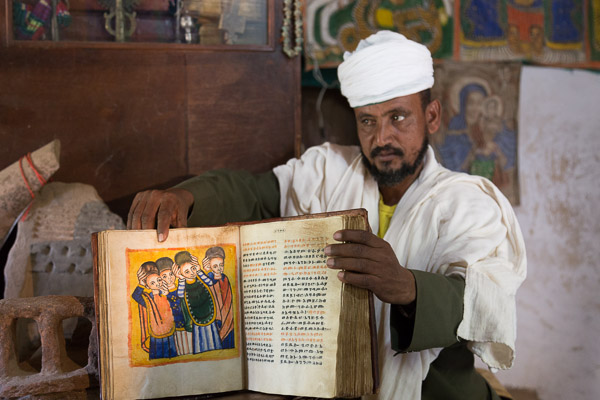
Another church, with a small museum attached, and a priest shows us
some of his holy books.

Christmas Dinner: Injera with all the trimmings!

In the evening, we gather on a local hill for a religious ritual of
our own - sundowner gin and tonics!
December 26
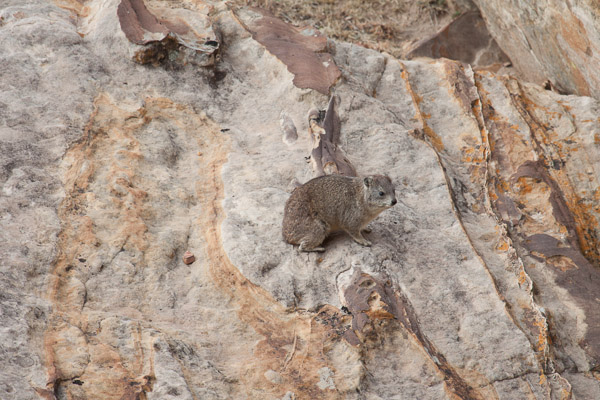
Rock hyraxes are about the size of a rabbit, but one of their
closest living relatives is the elephant!
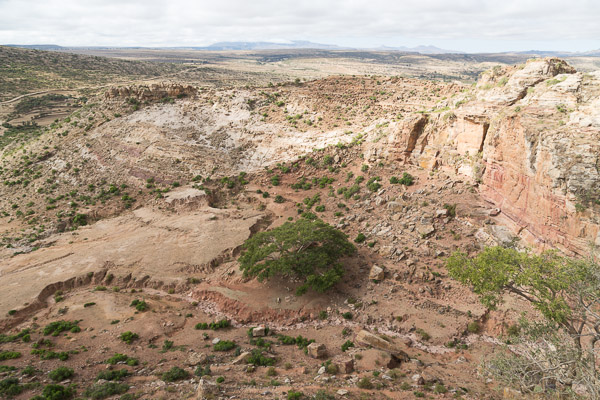
Looking down from the top.
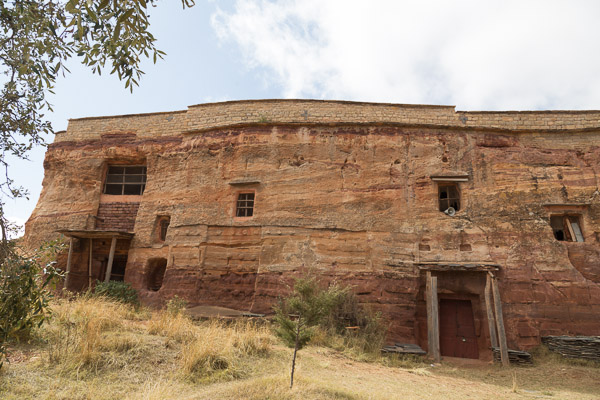
And here it is, our first rock church. Technically this is known as
"semi-monolithic", because it's not separated from the original rock
on all four sides.
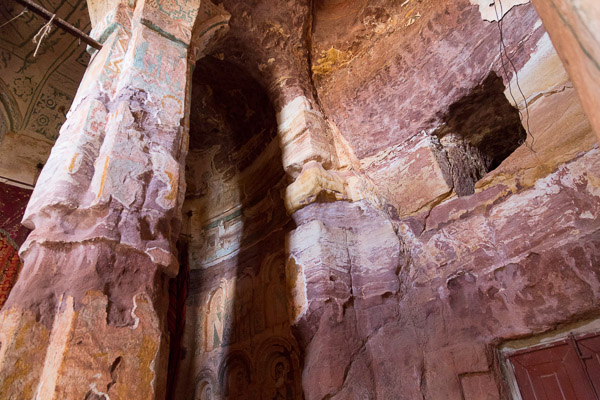
The rock is soft, and even the interior has suffered from erosion
over the centuries but it's still impressive.
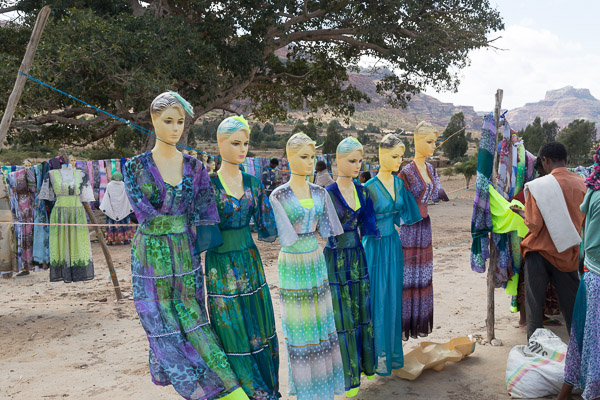
After the church, we visit a local village market. It contains all
the things you might expect in an African village market, but some
you probably wouldn't...
December 27
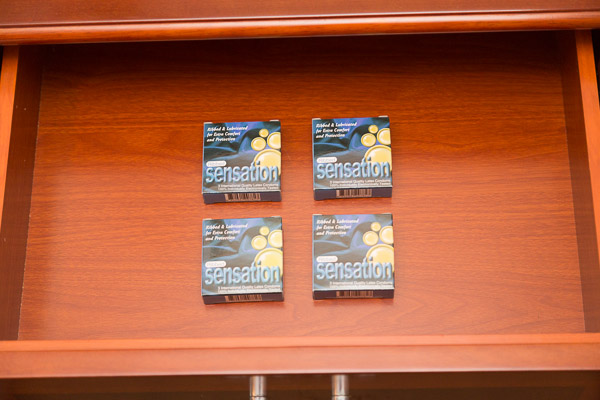
Some hotels, you find a Gideon bible in the drawer. Some,
you don't.
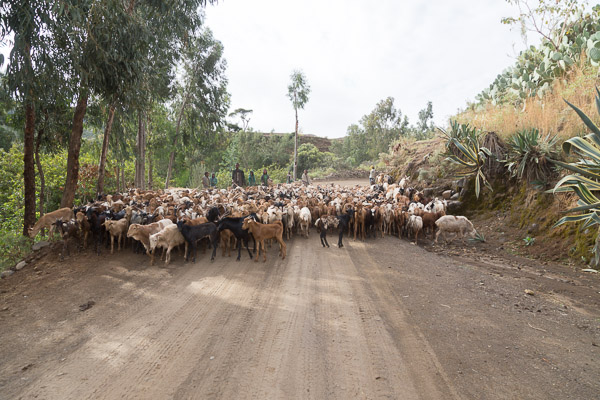
Roadblock: goats.

Roadblock: bulldozer. Travel in Africa is never dull.
December 28
Lalibela...
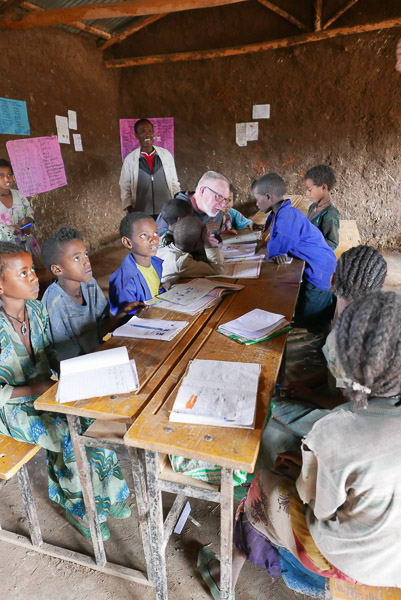
Michael, who at that point might still have been trying to persuade
us that he travelled in ladies' underwear (professionally speaking),
allows his inner pedagogue to escape momentarily.
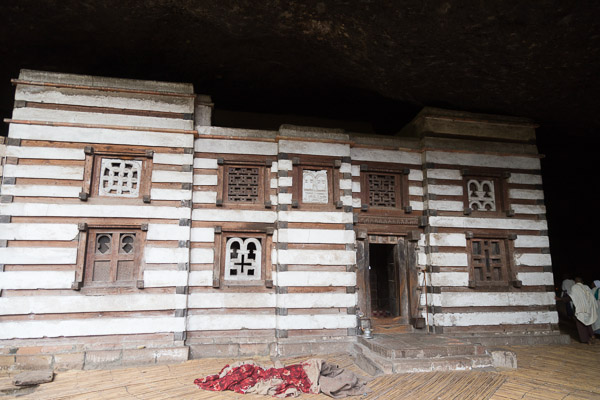
This is a 'built-up cave church', an artificial structure inside a
natural cave. Bradt is rather unflattering in its
description of it as something like a cream layer cake.
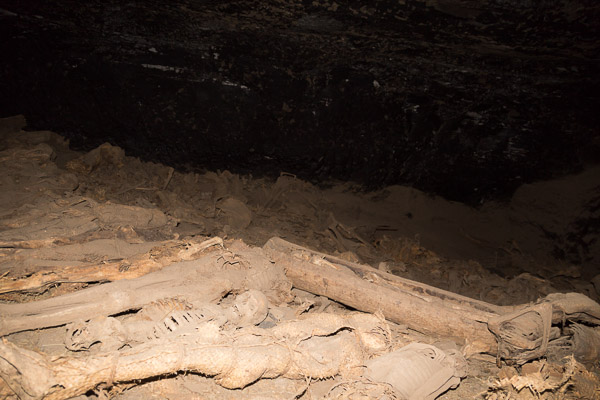
See Lalibela and die?! These are the skeletons of ancient pilgrims, just lying in a corner behind a bit of chain-link fence.

This extraordinary structure is a restaurant, "Ben Abeba", co-owned by an expat Scottish lady named Susan. The food is good, the views are amazing, and Susan herself is definitely part of the entertainment. Our schedule theoretically has the afternoon "at leisure", but after an extended lunch, there really isn't any afternoon left. Nobody leaves here quickly, it seems.

Back at the hotel there's some localised rain, but the sun shines nearby for a fine rainbow.
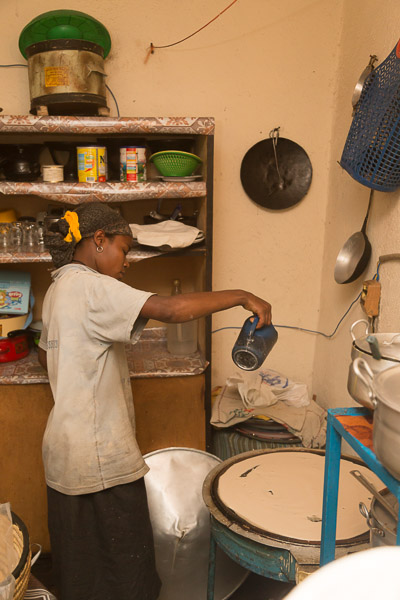
Our evening meal is at the house of a local family. This is injera being made.
December 29
The monolithic churches!
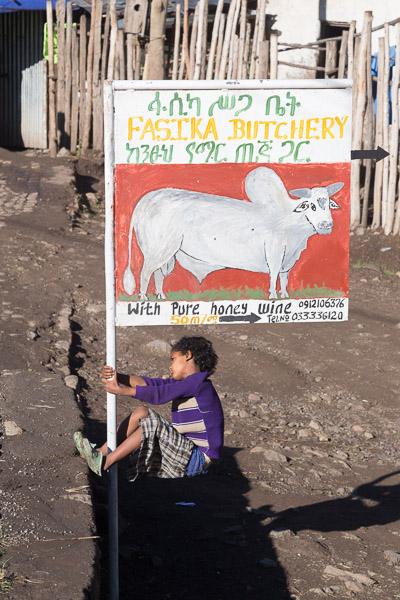
Amanda and I walk up to the ticket office while the others faff about taking the minibus. In Lalibela, you go to the butchers' to buy honey wine. Obvious, really.
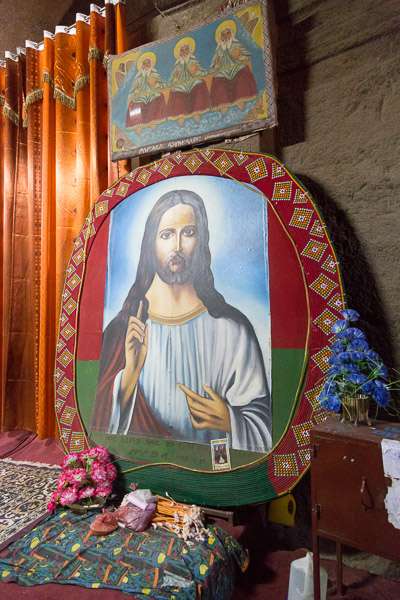
Conchita Wurst offers her blessing.
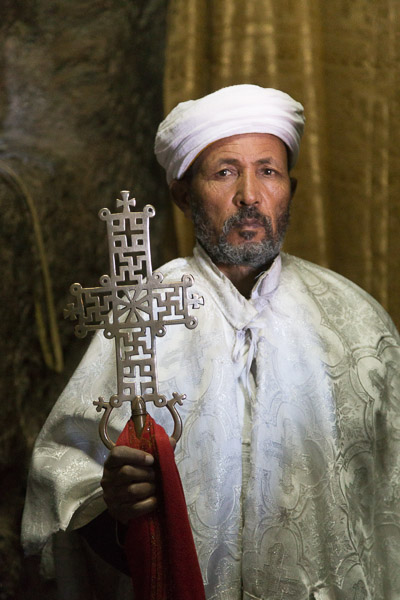
A priest holds a Lalibela cross. There are three distinct types of cross linked to specific areas, of which the other two are the Gondar cross (recognisable by its nine ostrich eggs) and the Axum (which has fractal subcrosses on each arm).
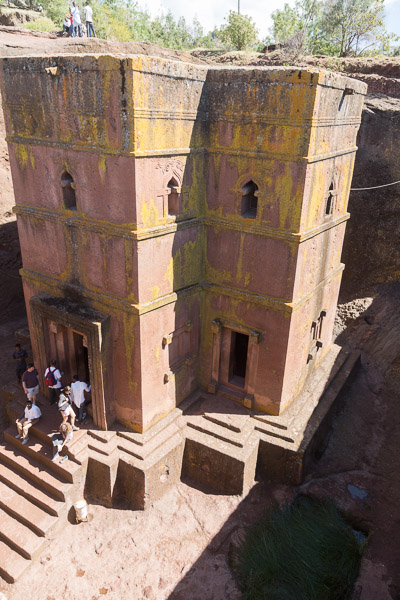
Well, the most famous of all, the cross-plan St George, or Bete Giyorgis as it's known locally.
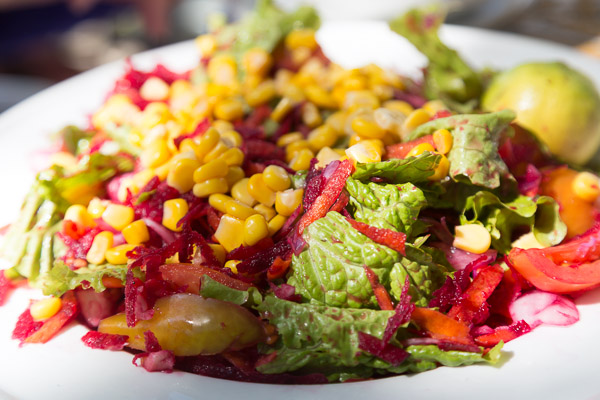
Look at that! Real proper salad! Much as I like traditional Ethiopian food, it does seem to be conspicuously lacking in fruit and fresh vegetables, despite them being able to grow (and actually growing) all manner of the things.
December 30
Into the wilderness for a few days trekking...

Ah, see that dark liquid stain on the ground? That's our minibus's fuel. This is not good.
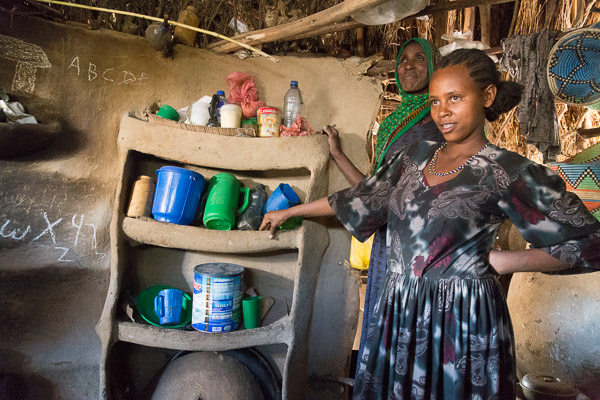
But we make an opportunity out of a problem and go visit a nearby village. We're the first farengi - foreigners - ever to enter this family's hut!

Right, that's the fuel tank removed. We'll travel on in another minibus while they weld a patch over the hole in the tank and get the original one going again. And no, they didn't call the AA. This is one of the things we love about the Third World - things go wrong, but it's not a big deal: everybody just gets on and does what's needed without any fuss. The M25 would probably be closed for a day if somebody spilt fuel on it.

And off we go. It's not so obvious here, but there are many areas where the rocks almost cover the ground. They aren't cleared because they help prevent wind-driven erosion.
December 31
The trek continues...
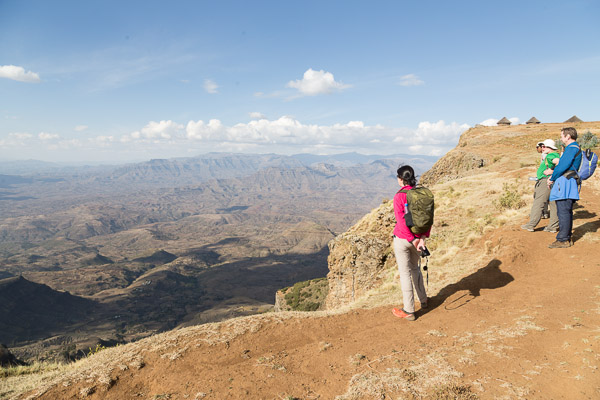
Looking over the valley just before the second camp.

A rather splendid grasshopper or similar, and quite enormous by UK standards - maybe 10 cm body length? That might be a slight exaggeration (I didn't actually take a ruler) but not a huge one.
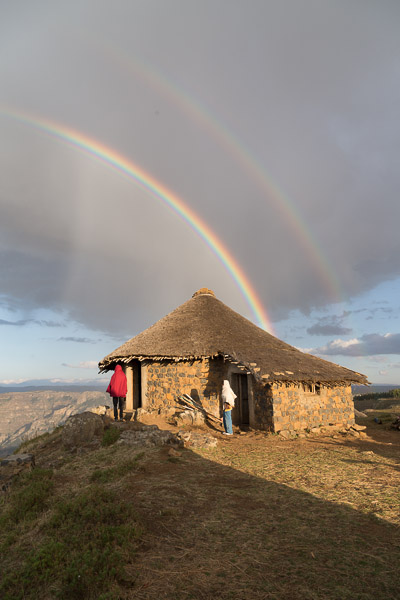
And an even better rainbow than we had at Lalibela!
Sadly, Olav and Michael, our fellows on this trek (for which we had split into two subgroups) were in their huts missing all the excitement. The two figures in the picture are Zinarbie, our guide, and one of the other locals.
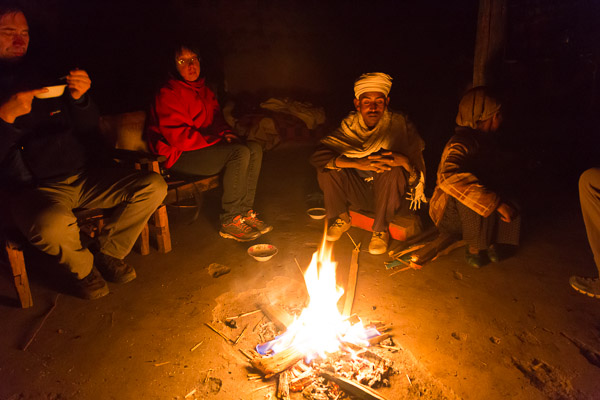
We all sit round the fire in the hut before dinner. The huts have little fireplaces with chimneys, but they don't get used on either of the nights and we're told that they simply don't work. An open fire in the middle of the floor creates a lot of smoke, and it fills the hut before seeping out through the roof. Before long, Amanda, Michael and Olav will all have to retreat further away because they're having difficulty breathing. I, OTOH, sit there like a native - well, apart from the fact that I need a proper chair because ten minutes' squatting like that will have me in agony...
January 1
End of the trek...

Amanda reads her Kindle in the sultry heat of the morning. Ish.
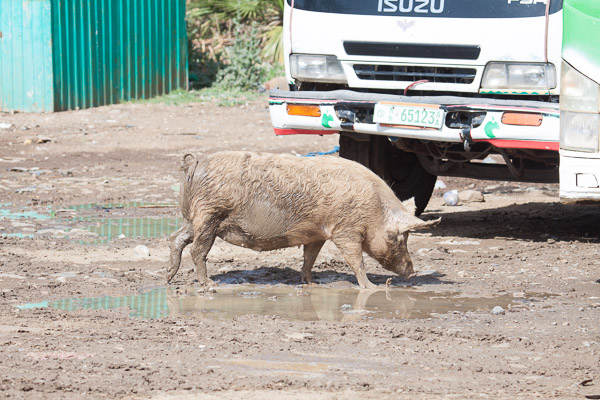
Ethiopian Christians don't eat pork, nor do the Muslims, and together they make up something like 99% of the population. It seems that this rare example of a pig is destined to be dinner for itinerant Chinese workers. Nobody seems to be quite sure what deals the Chinese and Ethiopian governments have made in private, but like most of the developing world today, the Chinese seem to be showing remarkable generosity in helping to build new infrastructure.
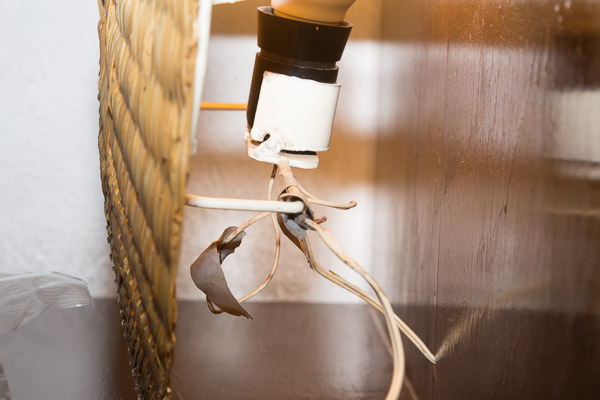
But nobody's taught Ethiopian hoteliers about EU electrical safety standards yet.
January 2
Waterfalls... And home for some...
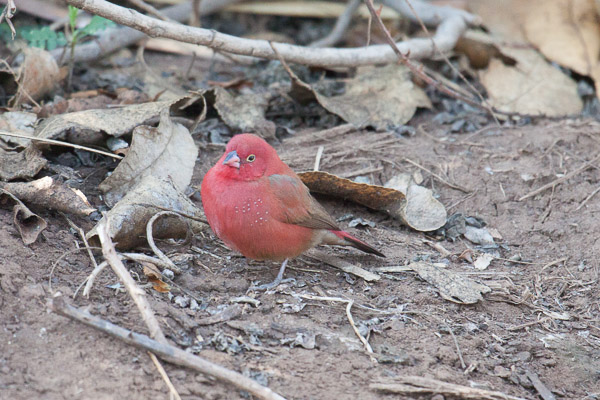
When we Brits talk about the "red red robin", we must accept that we are exaggerating slightly. This is red!
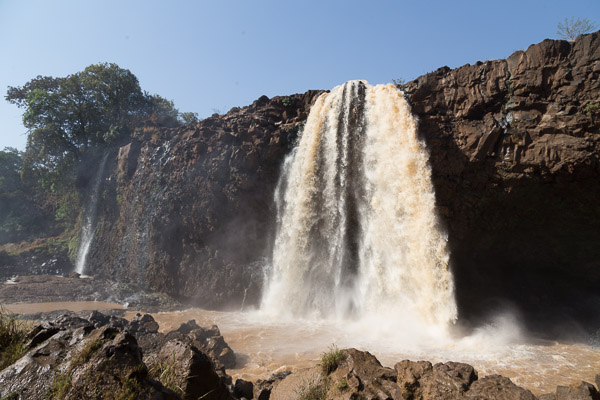
A fine waterfall, but Bradt quotes a 19th century account which tells us that before the river was damned for hydro power, and in the rainy season, it was utterly mind-blowing, spreading across the entire cliff. To be fair, we've been to quite a few places over the years where the water was more dramatic in the rainy season, which is precisely why we've chosen to travel in the dry season.
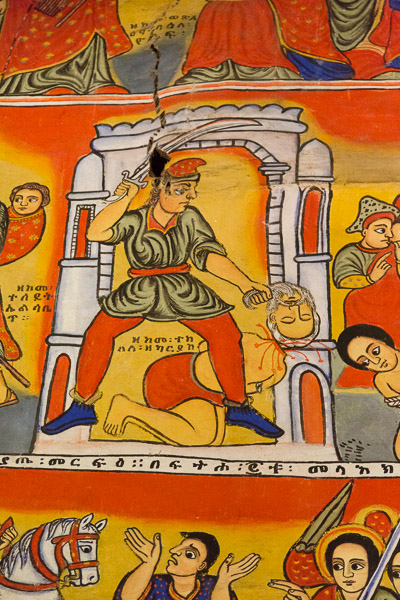
Another boat ride takes us to another church, one which seems quite remarkably gratuitously violent in its pictures. Anyone who thinks "Jihadi John" was only evil because of Islamic fundamentalism should have their noses rubbed in this Christian iconography until they swear never to read the Daily Mail again.
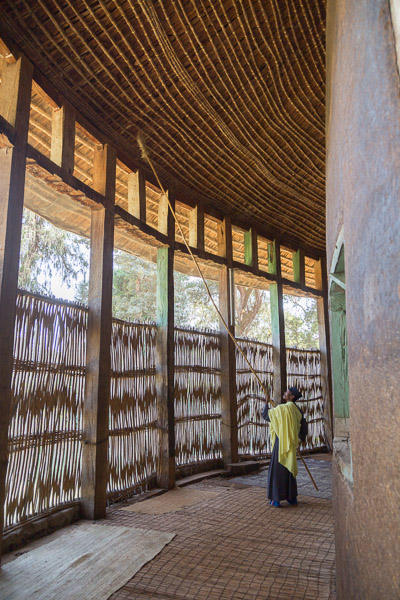
Never mind severed heads and cannibals, the roof needs dusting.
Part 2 - Just Us
This part of the holiday was deliberately much lower-key, so apart from the first picture, I won't do a day-by-day listing, just a summary of the two camps we stayed at.
January 3
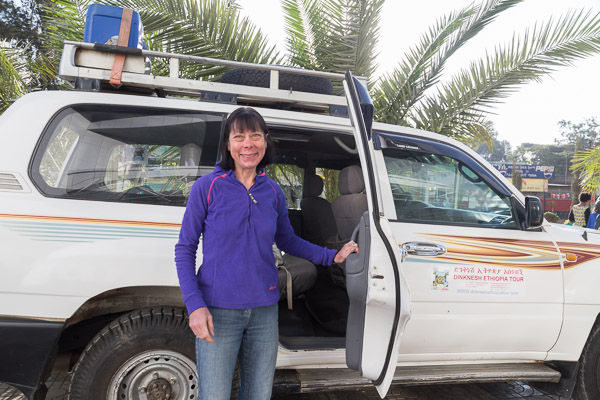
Farewell to the group, we're on our own now.
Bale Mountains (Jan 4-6)
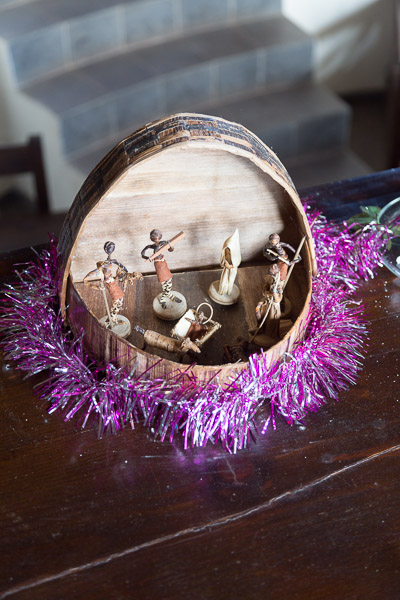
Nativity scene at the lodge!

Biruk, one of the lodge guides, demonstrates his Tarzan technique. I would have had a go were it not for the fact that in the Amazonian jungle in 1994, another guide invited me to swing on a vine which promptly broke and dumped me in a muddy puddle, to the great amusement of the assembled multitudes.
Some local endemics...

Giant Mole Rat.
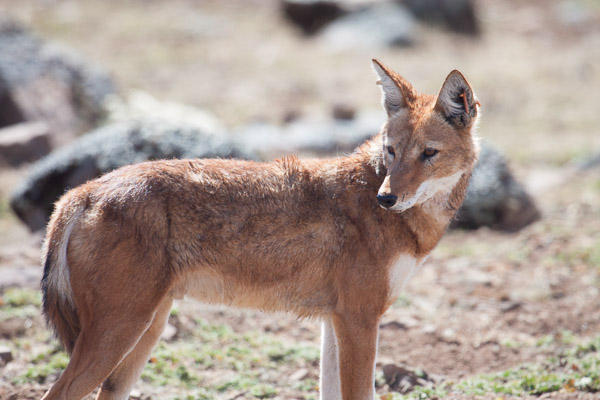
Ethiopian Wolf
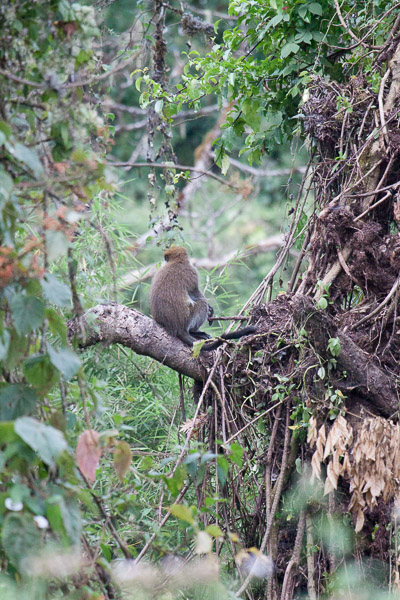
Bale Monkey
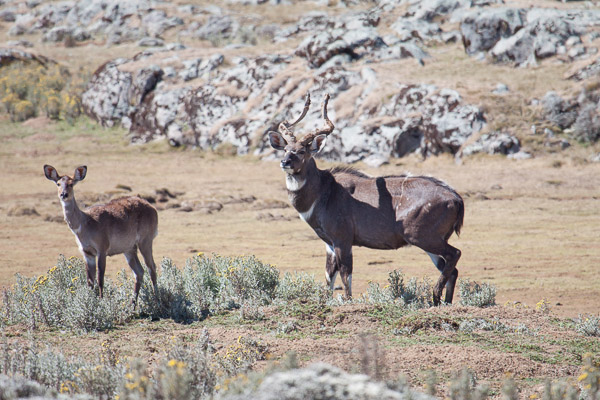
Mountain Nyala
Lake Langano (Jan 7-9)
Langano is mainly about birds, and there were some pretty hardcore birding types at the lodge. Some of you will know of our highly advanced scientific approach to the classification of birds: the three basic categories, Big!, Pretty!, Boring! Here then are some of the first two...
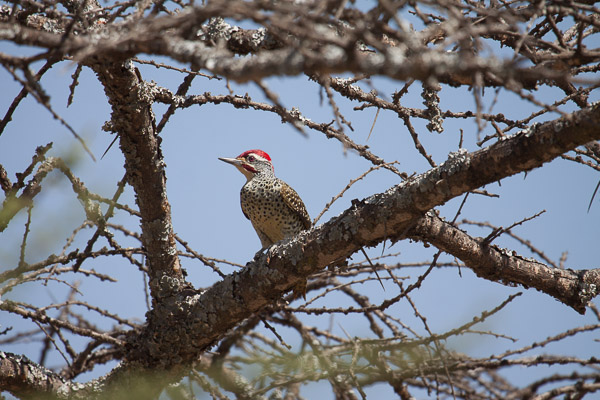
This one's a woodpecker; I know because I saw him pecking wood.

African Fish Eagle.
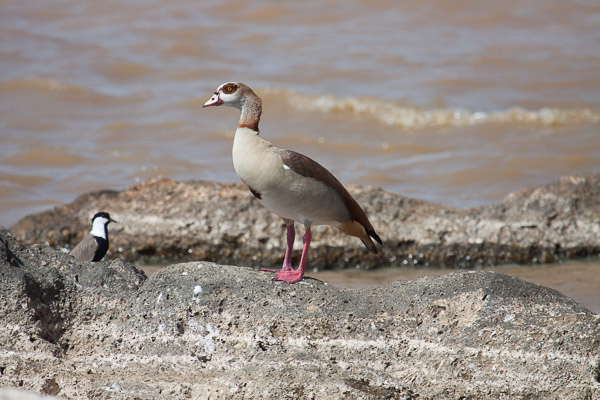
Err, looks a bit like a duck, maybe?
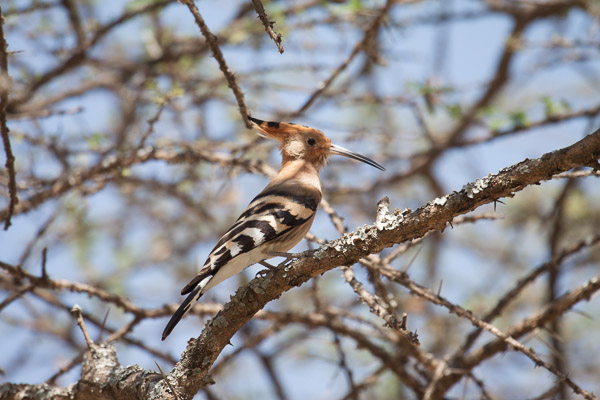
Hoopoe.

Pied Kingfisher.
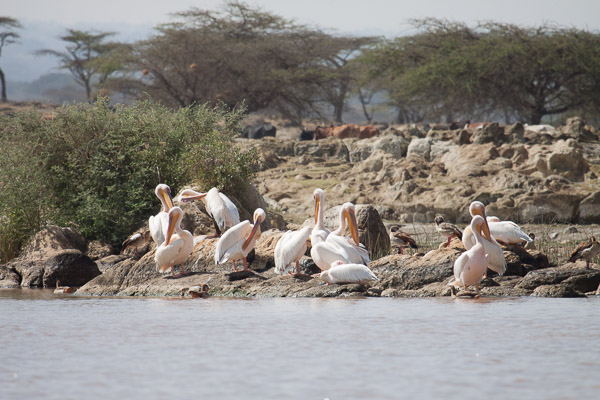
Pelicans.
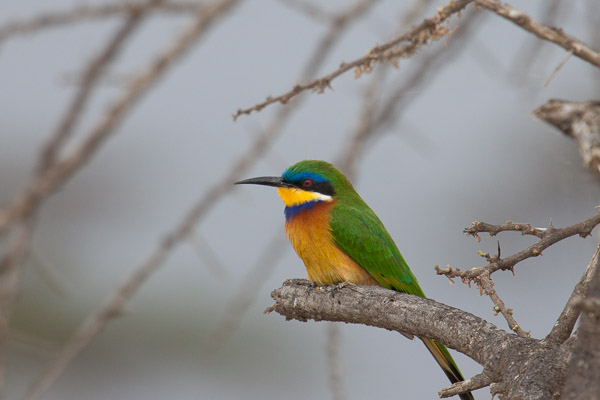
I think this is one of the Sunbirds.
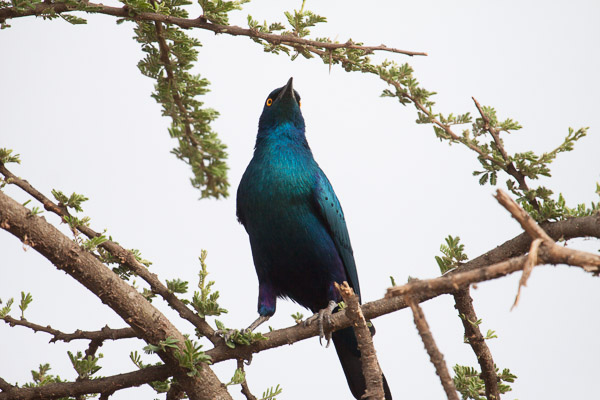
Blue-Eared Starling. Quite why the ears are singled out when the whole thing is blue is a mystery that doubtless proper birdy types can explain.
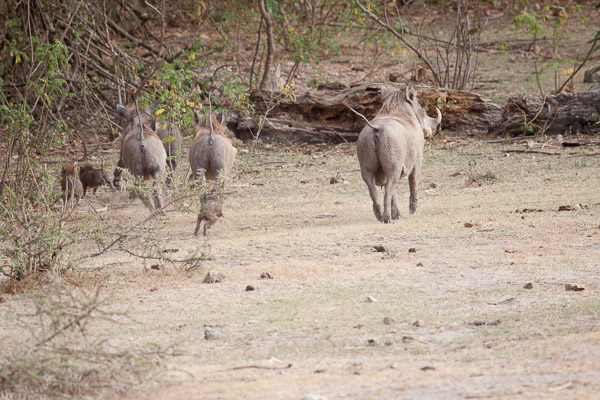
Not birds at all, but warthogs who didn't want to be photographed.
So there we are: three weeks in Ethiopia condensed into a few dozen pictures.